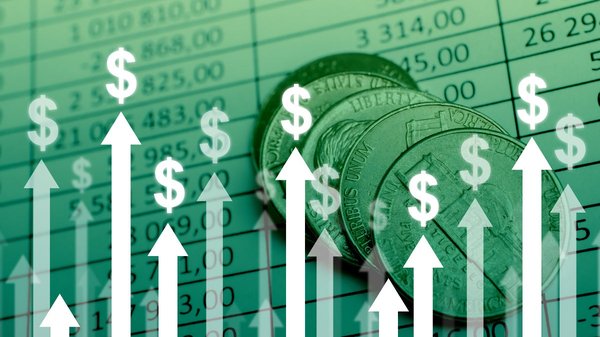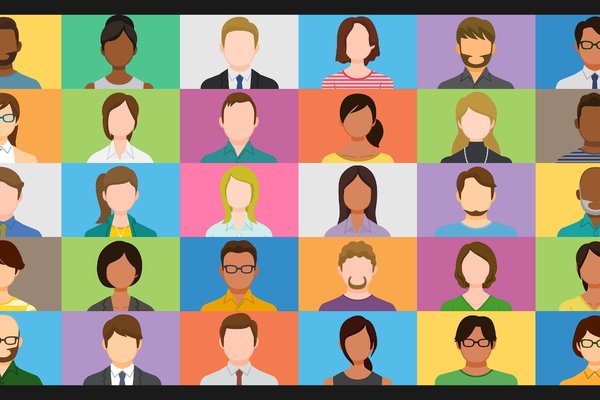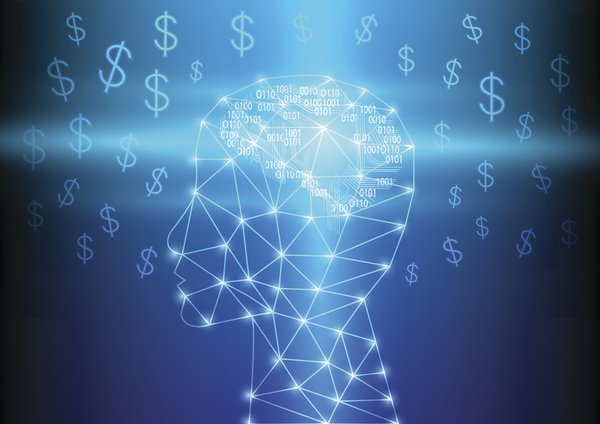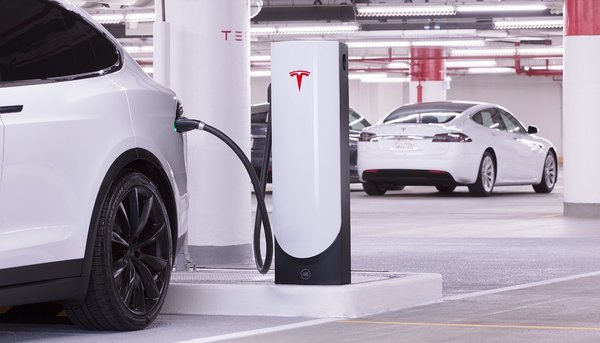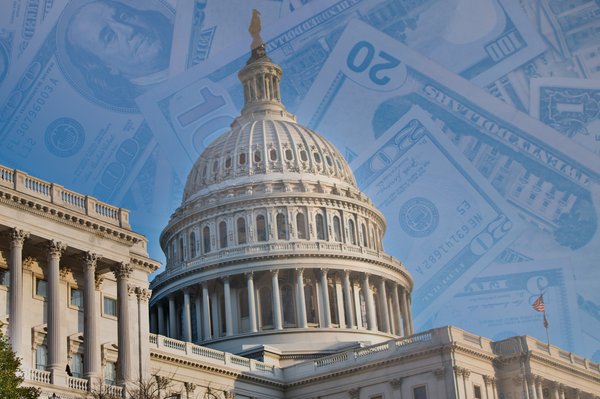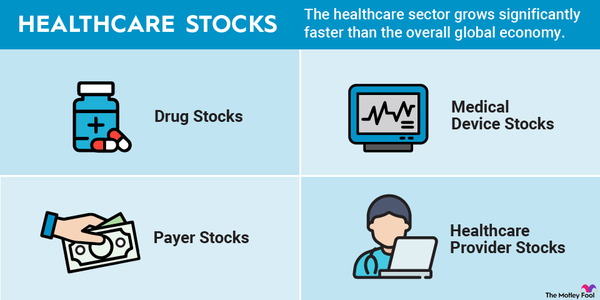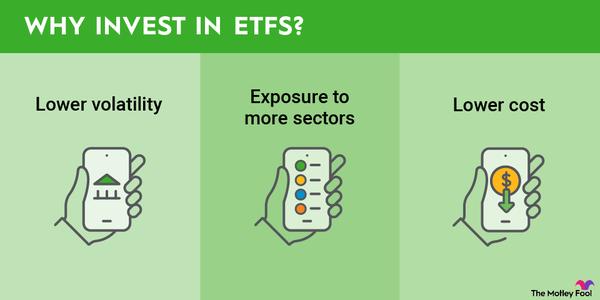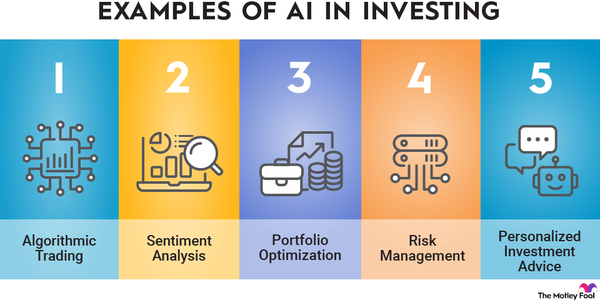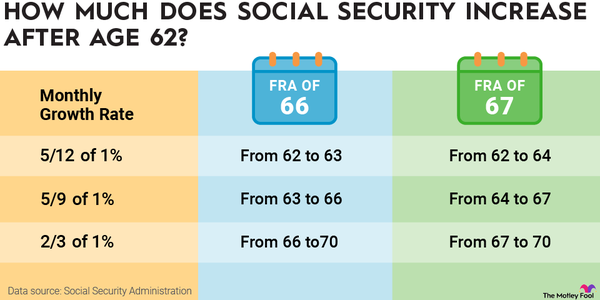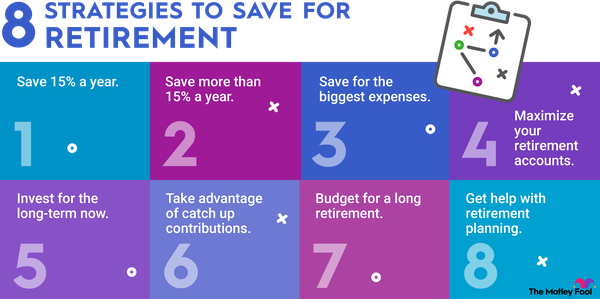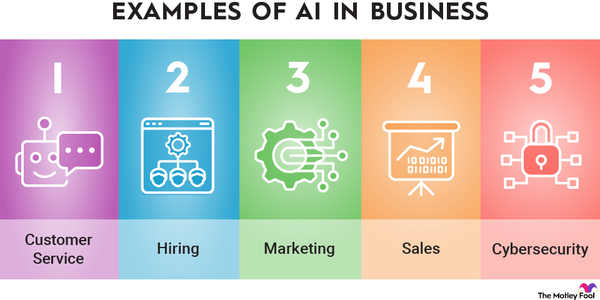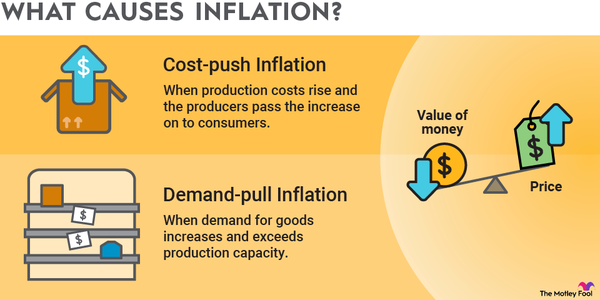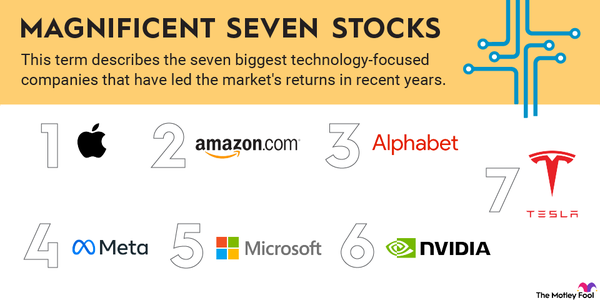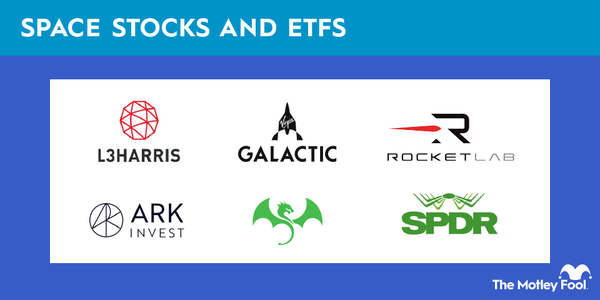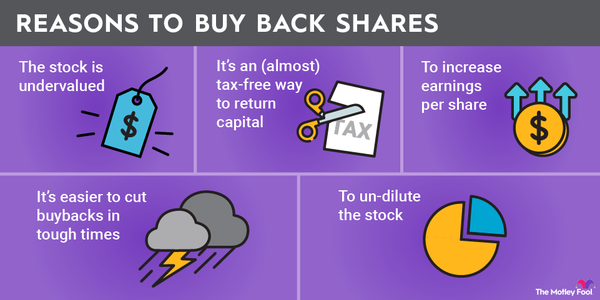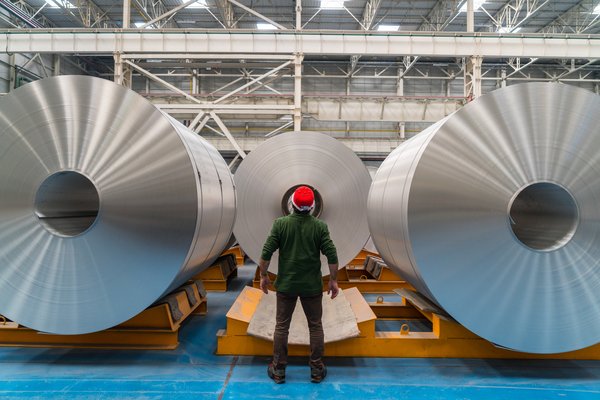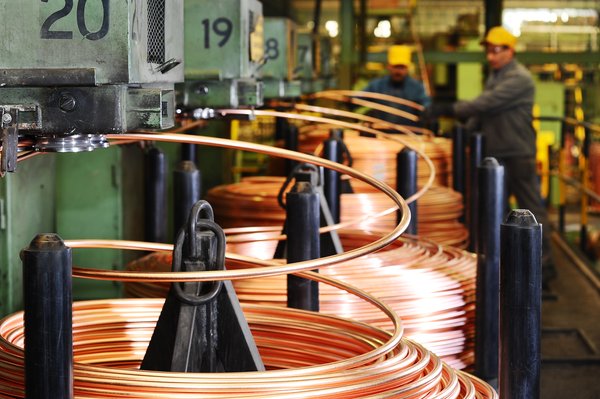Behind generative AI’s march toward ubiquity are inventions and new applications, many of which have patents attached to them. There are nearly 55,000 generative AI patent families in effect, according to the World Intellectual Property Organization (WIPO). In 2023 alone, 14,080 were published, up from just 733 in 2014. That growth highlights the explosion in generative AI use cases as well as business interest in the transformative technology.
For investors, data on which companies own the most generative AI patents, which applications those patents have, and which generative AI models those patents use can reveal stocks and sectors in which generative AI is poised to drive growth.
The companies with the most generative AI patents
The companies with the most generative AI patents
Tencent (OTC:TCEHY) holds the most generative AI patents, 2,074, according to analysis done by WIPO and EconSight/IFI.
“Tencent's patent haul reflects its position as one of China's premier global tech companies,” said Asit Sharma, senior investment analyst and lead advisor at The Motley Fool.
“Tencent also provides an insight into how consumer-facing technology giants in China have leaned into innovation following the government's enforcement of a tighter regulatory environment that has crimped some of their traditional revenue streams over the last five years,” Sharma continued.
Chinese companies dominate the list of companies that hold the most generative AI patents. Four of the top 5 companies are Chinese, as are 10 of the top 20.
“Lopsided patent filings versus American tech leaders suggest that Chinese firms may have an early advantage in the race to develop transformative products and services using generative AI. However, we should be careful not to draw broad conclusions this early in the game,” Sharma cautioned.
There are three reasons to not overreact to Chinese companies filing more generative AI patents than American companies, Sharma said:
- Chinese companies have historically focused on patent quantity to lock in opportunities for revenue down the road.
- American AI leaders like Alphabet (NASDAQ:GOOG), Microsoft (NASDAQ:MSFT), Meta Platforms (NASDAQ:META), and IBM (NYSE:IBM) are by far the most cited in academic research.
- Academic references to LLM development are a better way to judge the value of a business’s generative AI intellectual property.
First, Chinese companies may be more apt to file patents to protect future revenue opportunities than their American peers. And rightly or wrongly, Chinese businesses, often spurred by government policy, have a reputation for favoring quantity over quality.
Second, American AI giants such as Alphabet, Microsoft, Meta, and IBM lead all other global businesses by a wide margin in the metric of most highly cited academic research papers. Academic references to influential breakthroughs in neural networks, transformer designs, and other aspects of large language model development function arguably as a more substantive way to gauge the early effect of generative AI intellectual property.
Rounding out the top five companies by number of generative AI patents are Ping An Insurance Group (OTC: PNGAY, Baidu (NASDAQ:BIDU), Alibaba (NYSE:BABA), and IBM.
Most companies among the top 20 generative AI patent holders are diversified technology giants with global reach.
There are a pair of outliers: Ping An Insurance Group and State Grid. Both are state-owned Chinese companies.
Ping An Insurance Group is the only financial services company among the top 20 generative AI patent holders, and it’s a big AI name. Insurance companies can apply generative AI to claims processing, risk assessment, and deeper product personalization.
“Ping An epitomizes a broader trend within the global insurance industry to improve the ‘combined ratio,’ a measure of profitability that takes both insurance loss ratios and efficiency into account,” Sharma said. “Machine learning and generative AI are opening up new opportunities for insurers to better assess risk in underwriting and automating areas like claims processing and customer service.”
“More broadly, Ping An's patent portfolio also reflects its plan to expand beyond insurance into technology, digital health, and other areas where generative AI might give it a competitive springboard,” he added.
State Grid is the only utility company on the list. It's also the largest utility company in the world. Despite not being a technology company, it uses plenty of generative AI applications, including grid optimization via predicting demand, predictive maintenance, and smart grid development.
Sharma sees two other factors behind State Grid’s generative AI push: Chinese industrial policy and geopolitical ambitions.
“State Grid's objectives are informed by China's industrial policy, which focuses on the development of exportable goods technology; for example, AI-capable sensors for Industrial Internet of Things (IIoT),” Sharma said.
“This focus is intertwined with geopolitics; for example, State Grid is tasked with supporting infrastructure for China's multinational Belt and Road initiative. So we can see that the company is likely active in genAI patents to ensure China's energy security while simultaneously innovating for industrial export and the export of energy technology wherever China seeks influence.”
Among American companies in the top 20 for generative AI patents are IBM, Alphabet, Microsoft, and Adobe (NASDAQ:ADBE).
IBM has long been an AI pioneer, perhaps most famous for breakthroughs associated with Watson, which utilized natural language processing years before ChatGPT catapulted onto the scene.
“The length of time IBM has devoted to machine learning and neural network–based AI before the explosion of transformer-based LLMs is paying a dividend as it seeks to remain influential in a fast-evolving generative AI landscape,” Sharma said. “IBM's patent portfolio may not be as wide as say, Tencent's, but it's relatively deep, and its IP lends itself to AI implementation across many industry verticals.”
Alphabet, Microsoft, and Adobe are integrating generative AI across their products. Alphabet and Microsoft have their own generative AI tools in Google Gemini and Microsoft CoPilot, and each is augmenting its other well-known products and applications with generative AI.
Adobe is focused on using generative AI for image creation, content generation, and analysis of PDFs.
Patent count isn’t determinative for a company’s strength in generative AI. The quality of patents matters as well. Analysts suggest that despite the numerical lead Chinese companies hold in generative AI patents, they have struggled to build tools based on them, in part due to their inability to access high-end, specialized AI semiconductors as a result of U.S. export controls.
But that gap in computing might not last forever, Sharma said. “A GPU accelerator deficit is likely hampering the rate of progress that Chinese tech firms can make in LLM development. However, restriction reliably births innovation over the long run, so we can expect to see a growing portion of Chinese patents aimed at workarounds for semiconductor compute power, including alternatives to GPU-based training and inference.”
Generative AI patents by use case
Applications and use cases most generative AI patents are built for, by company
The most common application cited in generative AI patents are software or an otherwise generally defined use case. That’s the case overall and among the 10 companies that hold the most generative AI patents. Life sciences are the second-most common application cited in generative AI patents, followed by document management and publishing, business solutions, and industry and manufacturing, according to WIPO.
Examining the use case for generative AI patents held by companies provides insights into which parts of their businesses or products may be improved by AI and, more broadly, which sectors may see the most AI-driven innovation.
Among the 10 most prolific generative AI patent holders, all but four have at least 10% of their generative AI patents in document management and publishing. Those six companies are Baidu (14%), Microsoft (14%), Alibaba (12%), Ping An Insurance Group (11%), Tencent (11%), and Bytedance (10%).
Some companies are patenting generative AI applications well within their area of expertise. For example, Ping An Insurance Group holds 101 generative AI patents with banking and finance use cases, which accounts for 6% of their generative AI patents. No other company in the top 10 had more than 0.85% of its generative AI patents in the banking and finance area.
Applying generative AI to business solutions is an area of focus for Alibaba and Microsoft. Alibaba has 91 generative AI patents in that area, some 16% of its total generative AI patents, while Microsoft holds 39, equal to 9% of its patents. Looking purely at the number of patents, Ping An Insurance Group has 124 generative AI patents related to business solutions, and Tencent has 119.
Tencent holds 90 generative AI patents with entertainment applications, which accounts for 5% of its generative AI patents and is the most held in that category among the top patent holders. Tencent is the largest video game company by some measures and is among the largest multimedia companies in the world, with music and video streaming products among others.
Life and medical sciences stands out as another category in which a handful of companies have a decent number of generative AI patents. Ping An Insurance Group leads the way with 227 generative AI patents in this area, roughly 13% of its generative AI patents held. Tencent has 73, roughly 3% of its generative AI patents, while IBM has 59, about 9% of its own generative AI patents.
Alphabet and Microsoft stand out for having 6% and 5% of their generative AI patents, respectively, in the field of life and medical sciences. For Alphabet, life and medical sciences is the third-most-popular use case for its generative AI patents behind telecommunications and software and other applications.
Use cases involving personal devices, computing, and human–computer interfaces make up 8% of Samsung’s generative AI patents, which aligns with the company’s longstanding focus on hardware. Microsoft is another company innovating in the hardware and generative AI space -- 6% of its generative AI patents have a use case in that area.
Samsung also leads the way in generative AI patents with a telecommunications application, followed by Alphabet. Both are seeking to better integrate generative AI into their smartphones.
The top generative AI patent applications overall
Among all generative AI patents, nearly half, some 48%, have a use case in software or are more nebulously defined, according to WIPO.
The next-most-common application for generative AI patents is life sciences (9% of all generative AI patents), document management and publishing (8%), and business solutions (8%).
The applications cited in generative AI patents that have seen the most growth since 2018 are energy management (81% average annual increase), transportation (66%), agriculture (60%), and security (59%). Those applications still make up a fraction of generative AI patents, however.
Generative AI patents by AI model
Which generative AI models are most common in patents, by company
Different generative AI models have different strengths that factor into how companies use them. The models companies cite in their patents can shed light on how they’re seeking to deploy generative AI.
WIPO categorizes generative AI into the following models:
- GAN: Generative adversarial networks (GANs) are a framework for machine learning that pits two neural networks -- a generator and a discriminator -- against each other to play a game of true or false that improves data outputs over time. Main applications include producing images and video. Beyond restoring old pictures and improving AI-generated art, GANs have a range of uses in medical and scientific fields, including modeling and imaging the cosmos, analyzing medical imaging, and reproducing medical imaging to protect patient privacy.
- LLM: Large language models (LLMs) specialize in natural language processing and allow for processing and generating significant amounts of text. Applications range from text generation for a variety of tasks to customer service chatbots, coding, translation, education, and summarizing text.
- VAE: Variational autoencoders (VAEs) compress data and use it to create new, realistic data that is similar. Applications include image generation and reconstruction, detection of anomalous data, medical imaging, and drug research.
- Diffusion models: Diffusion models are trained to generate new data by cleaning up noise from existing images or data sets. Image generation is the most common use of diffusion models.
- Autoregressive models: Autoregressive models predict and generate the next value, such as a word, based on previous inputs. These models are a foundational part of natural language processing and LLMs.
Here’s how frequently each model shows up in the patents held by the top generative AI patent holders.
Most companies utilize GAN most commonly in their generative AI patents, but a lack of specificity in most of their patent applications results in data gaps that make it difficult to draw more concrete conclusions.
Generative AI patents by data type
The type of data companies use most in generative AI patents
The type of data used to develop generative AI inventions that are patented is another signpost that investors can use to see what type of solutions companies are building.
Images and video are the most common form of data used, showing up in 17,996 generative AI patents across all filers from 2014 to 2023, per WIPO. That’s followed by other types of data (14,270 patents), text (13,494 patents), and speech and voice (13,480 patents).
3D image models as a data source appeared in 3,145 generative AI patents from 2014 to 2023. Molecules, genes, and proteins appeared in 1,494 patents, and code appeared in 1,340.
The fastest-growing type of data used in generative AI patents is from molecules, genes, and proteins, followed by images and video and code.
A few companies among the top 20 generative AI patent holders stand out for relying more than others on certain types of data.
Among Adobe’s generative AI patents, 52% involve the processing of images and video, nearly double the rate at which images and video are applied in all generative AI patents. That aligns with Adobe’s push for AI image-generation tools.
Siemens (OTC:SIEGY), the German industrial multinational, is another heavy user of images and video as inputs and outputs in its generative AI patents. Fifty-three percent of its generative AI patents are based on that type of data. That may reflect an interest in computer vision and image analysis that utilizes generative AI to assist with industrial automation.
Two entertainment companies utilize 3D image models in their generative AI patents at a higher rate than other companies. Among Sony’s (NYSE:SONY) generative AI patents, 13% are based on 3D image models, while 10% of Netease’s patents use the same type of data. Both companies produce video games, which make heavy use of 3D assets. 3D image models may also play a role in Sony’s movie business.
IBM stands out for 5% of its generative AI patents utilizing data on molecules, genes, and proteins -- a higher share than any other company among the top 20 generative AI patent holders. IBM has shown an interest in using AI for advances in this area, one example being its MoLFormers project.
Generative AI patent trends
Generative AI patent trends
Just over 14,000 generative AI patents were filed in 2023, up from 11,630 in 2022 and well over the 733 that were filed in 2014.
Generative AI patent filings took off after 2017, the year in which the transformer architecture was put forward by researchers from Google.
Two-thirds of inventors holding generative AI patents are based in China, according to WIPO. The United States is home to the second-largest share, with 11%, followed by South Korea, Japan, and India.
The percentage of generative AI patents won by investors each year in the United States has steadily declined from 20% in 2014 to 8% in 2023. Meanwhile, the share of generative AI patents awarded to inventors in China each year grew from 33% in 2014 to 72% in 2023. Japanese inventors’ share of generative AI patents won annually declined from 18% to 3% over the same period.
Why should investors care about generative AI patents?
Why does data on generative AI patents matter for investors?
Generative AI patents are one indicator for how companies and entire industries may evolve. Companies with competitive generative AI patent portfolios signal strong prospects for innovation, new product development, and other competitive advantages.
While the data suggests that Chinese companies dominate the generative AI patent landscape, they face challenges in acquiring high-end, specialized semiconductors necessary for those inventions to reach their full potential. That may better position U.S. companies, like IBM, Microsoft, Alphabet, and Adobe, to apply their innovations to products that drive growth.
For investors, patents are just one data point out of many that can offer clues about a company’s strength in a particular field, like generative AI, and the direction it may take new products.
“To an extent, the quantity of filed patents does matter, as it gives us a sense of a tech leader's activity in AI ecosystem innovation and its ability to turn R&D into practicable and potentially protected (upon patent grant) ideas,” Sharma said. “Beyond this, it's a little harder for investors to gauge the impact of a generative AI patent portfolio.”
Sources
- Centre for International Governance Innovation (2024). “China Leads on Generative AI Patents, but What Does that Mean?”
- Centre for International Governance Innovation (2021). “What Do China’s High Patent Numbers Really Mean?”
- WIPO (2024). “Patent Landscape Report - Generative Artificial Intelligence (GenAI).”
















